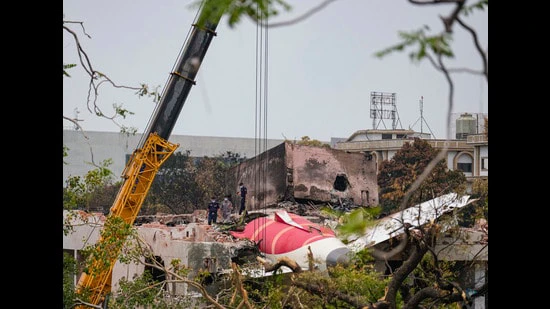The Wall Street Journal (WSJ) has reported that cockpit voice recordings suggest Air India Flight 171’s captain switched off engine fuel during take-off, catching his co-pilot by surprise.
The revelation significantly changes understanding of one of India’s deadliest aviation tragedies, though deliberate human action had emerged as a focus after the Aircraft Accident Investigation Bureau (AAIB)’s preliminary report showed fuel switches moved “one after another” to cutoff position, with “one pilot asking the other why did he cutoff” and receiving a denial – without identifying who said what. AAIB said reports in Western media were irresponsible and it was illogical to reach “definite conclusions”.
WSJ paints a disturbing picture of the aircraft’s final moments. It says black box recordings suggest captain Sumeet Sabharwal operated the fuel control switches, prompting first officer Clive Kunder to confront him. The captain purportedly denied responsibility while remaining calm as his junior colleague expressed surprise and panic, potentially struggling to prevent the crash that killed 241 on board and 19 others on the ground. And it isn’t clear whether WSJ had access to the transcript of the recordings. AAIB’s report indicated aviation psychologists and medicine specialists would join the probe. Authorities could reasonably argue that premature release might irreparably damage a deceased pilot’s reputation before determining whether his actions were deliberate or stemmed from medical incapacitation or other factors. Protecting the dead from unfounded speculation while examining all possibilities represents a legitimate investigative principle. That said, immediate transparency may be the most compelling way forward for three specific reasons.
First, the transcript appears to contain damning evidence that was always going to emerge through other investigation stakeholders, including the NTSB, Boeing, and Air India itself. Expecting such information to remain confidential was unrealistic. Second, lack of information breeds exactly the suspicion and conspiracy theories that any responsible investigation seeks to prevent. The preliminary report’s evasive approach has fuelled extreme arguments – one side alleges a cover-up at the behest of corporate powers, while the other was quick to blame the crew, even with scant information. Third, and most importantly, facts speak loudest. Yet the preliminary report offered frustratingly few. Beyond establishing the timeline of switch movements, investigators provided minimal insights. The report needed to detail not just the known facts but also the known unknowns – the questions investigators are pursuing, the evidence still required, and the efforts to gather them.
The path forward requires abandoning half-measures for full transparency. AAIB must release complete cockpit voice recorder transcripts alongside detailed analysis of what investigators know, what they suspect, and what remains unknown.
